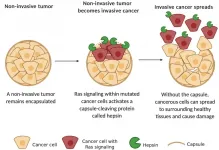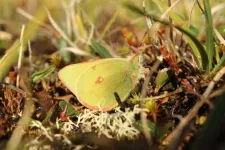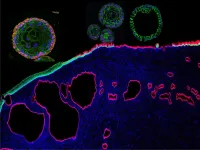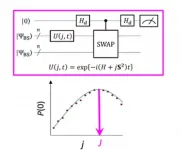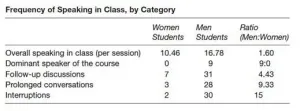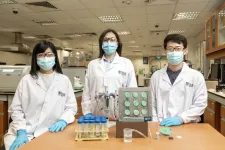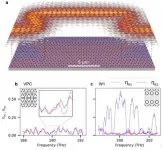(Press-News.org) Researchers at the University of Helsinki have defined a cancer invasion machinery, which is orchestrated by a frequently mutated cancer gene called Ras. When signaling from Ras protein becomes abnormally high, like it does in many cancers, this switches on the cellular machinery that helps the cancer cells to depart from the tissue from which the cells have developed.
It has been unclear how the cancer invasion machinery works exactly, until now, as the study finds Ras in the role of Friar Lawrence in Shakespeare's famous play, "Get me an iron crow and bring it straight unto my cell (Romeo and Juliet, 5.2.21-23)." In other words, a "molecular crowbar" seems to execute the job. The new study has been published today at Cancer Research, a journal of the American Association for Cancer Research.
Cancer researcher and the last author of the study, Professor Juha Klefström, explains the findings:
"As long as tumors remain in the original body tissue from which they developed from, they are benign and harmless. The tumor cells only become life-threatening cancer cells, when they acquire the capability to spread into surrounding healthy tissues through a process called invasion. We found that a master cancer protein called Ras activates such invasion machinery in the cells. Central to the function of this machinery is a serine protease called hepsin."
Hepsin is a protease, a type of protein that cleaves other proteins into pieces. Typically, in the breast and other epithelial tissues, serine proteases like hepsin ensure that the epithelial cells are properly glued to the neighboring cells and to a surrounding capsule called the basement membrane. Accordingly, hepsin is found in limited, specific contact sites on the surface of the cell where it binds to other cells and the basement membrane. However, the new study shows, that if Ras becomes converted to its cancer-causing form by an unfortunate mutation, persistent signals from cancer-causing Ras eventually produce too much hepsin, which can then be found all over the cell as opposed to small areas.
"When hepsin is produced in excess, it becomes a crowbar that breaks down the basement membrane. When this insulating capsule has been torn apart, cancerous epithelial cells can invade the surrounding tissues, causing damage and, in the worst case, spread to other organs causing metastases. In essence, we believe that normally hepsin is a good guy that nurtures the basement membrane but when superpowered under the influence of Ras, it becomes a bad guy that instigates the basement membrane breakdown," Klefström adds.
Thwarting a molecular crowbar
Nearly one-fifth of all cancers harbour cancer-causing mutant Ras. The mutant form is especially common in pancreatic and colorectal cancer.
"Ras is not that commonly mutated in breast cancer, which our laboratory studies, but our research shows that mutant Ras hijacks hepsin through a signaling mechanism that is common also in breast cancer. Therefore, our findings are relevant for understanding the mechanisms of how breast cancer spreads", says the first author of the study Dr Topi Tervonen.
Mutant Ras has been a holy grail for drug developers due to its common presence in human cancer. However, the task of developing specific Ras-blocking drugs has turned out to be extremely difficult. If Ras is a difficult drug target, would it be possible to prevent the cancer-causing effects of Ras by blocking the cancerous signals that Ras is sending in the cells?
"Interestingly, we managed to almost completely prevent the damage to basement membrane caused by the Ras cancer protein in a three-dimensional cell culture, when we prevented hepsin from functioning by using specific antibodies. In animal experiments, blocking hepsin also significantly reduced the spread of Ras-expressing tumors to surrounding tissues," Klefström and Tervonen state.
"Our findings help understand the mechanisms of cancer spreading, and they open new ideas and opportunities to develop next generation cancer treatments. Our research still has a ways to go before the clinics though," they continue.
INFORMATION:
Climate change is more pronounced in the Arctic than anywhere else on the planet, raising concerns about the ability of wildlife to cope with the new conditions. A new study shows that rare insects are declining, suggesting that climatic changes may favour common species.
As part of a new volume of studies on the global insect decline, researchers are presenting the first Arctic insect population trends from a 24-year monitoring record of standardized insect abundance data from North-East Greenland.
The work took place during 1996-2018 as part of the ecosystem-based monitoring program Greenland Ecosystem Monitoring at the field station Zackenberg, located in the world's largest national ...
Organoids are increasingly being used in biomedical research. These are organ-like structures created in the laboratory that are only a few millimetres in size. Organoids can be used to study life processes and the effect of drugs. Because they closely resemble real organs, they offer several advantages over other cell cultures.
Now there are also organoid models developed for the cervix. This part of the female body is particularly at risk to develop cancers. By creating novel organoid models, a group led by Cindrilla Chumduri (Würzburg), Rajendra Kumar Gurumurthy (Berlin) and Thomas F. Meyer ...
WHAT:
Healthcare providers must be able to explain the latest data supporting the safety and efficacy of vaccines for coronavirus disease 2019 (COVID-19) so they can strongly encourage vaccination when appropriate while acknowledging that uncertainty and unknowns remain. This message comes from a new commentary co-authored by Anthony S. Fauci, M.D., director of the National Institute of Allergy and Infectious Diseases (NIAID), part of the National Institutes of Health, and other leading NIAID scientists in the journal Annals of Internal Medicine.
The commentary provides an overview of the seven COVID-19 vaccines furthest along in development in the United States. For each vaccine candidate, the authors describe ...
Understanding how the natural world works enables us to mimic it for the benefit of humankind. Think of how much we rely on batteries. At the core is understanding molecular structures and the behavior of electrons within them. Calculating the energy differences between a molecule's electronic ground and excited spin states helps us understand how to better use that molecule in a variety of chemical, biomedical and industrial applications. We have made much progress in molecules with closed-shell systems, in which electrons are paired up and stable. Open-shell systems, on the ...
Men speak 1.6 times more often than women in college classrooms, revealing how gender inequities regarding classroom participation still exist, according to a Dartmouth study. By comparison, women are more hesitant to speak and are more apt to use apologetic language. The findings are published in Gender & Society.
When students didn't have to raise their hands to participate in class, men spoke three times more often than women. "You would think that it would be more equitable for students to not have to raise their hands to speak in class because then anyone could talk ...
RICHLAND, Wash.--E-cigarettes stress and inflame the lungs of rats, compromising important regulatory proteins through exposure, according to research recently published in the journal Redox Biology. The findings, made possible by a biomolecular technique developed by researchers at the U.S. Department of Energy's Pacific Northwest National Laboratory, reveal that vaping induces subtle structural changes in proteins, marking the first time researchers have measured such damage. The results suggest that common compounds in the electronic alternative to conventional cigarettes are not without their own harms.
After exposing rats to e-cigarette vapor for three one-hour sessions ...
Some say future wars will be fought over water, and a billion people around the world are already struggling to find enough water to live.
Now, researchers at the National University of Singapore (NUS) are coming to the rescue. They have created a substance that extracts water from air without any external power source.
In the earth's atmosphere, there is water that can fill almost half a trillion Olympic swimming pools. But it has long been overlooked as a source for potable water.
To extract water from this under utilised source, a team led by Professor Ho Ghim Wei from the NUS Department of Electrical and Computer Engineering created a type of aerogel, a solid material that weighs almost nothing. Under the microscope, it looks like a sponge, but it ...
University of South Australia scientists have developed the world's first test to accurately predict mood disorders in people, based on the levels of a specific protein found in the brain.
Links between low levels of mature brain-derived neurotrophic factor (mBDNF) and depression are well known but, until now, it hasn't been possible to distinguish between the three forms of the BDNF protein in blood samples.
The mature form promotes the growth of neurons and protects the brain, but the other two BDNF forms - its precursor and the prodomain of BDNF - bind to different receptors, causing nerve degeneration ...
SINGAPORE, 19 January 2021 - Duke-NUS Medical School researchers, together with collaborators in Singapore, have designed armoured immune cells that can attack recurring cancer in liver transplant patients, while temporarily evading immunosuppressant drugs patients take to avoid organ rejection. The findings were published in the journal Hepatology.
Hepatocellular carcinoma is the most common type of primary liver cancer and the sixth most common cancer worldwide. It often develops in people with chronic liver disease following hepatitis B infection.
A common treatment for hepatocellular carcinoma is to completely ...
Topologically tailored photonic crystals (PhC) have opened up the possibility for attaining robust unidirectional transport of classical and quantum systems. The demand for unprecedented guiding capabilities that support unhindered transport around imperfections and sharp corners at telecom wavelengths, without the need for any optimization, is fundamental for efficient distribution of information through dense on-chip photonic networks. However, transport properties of experimental realizations of such topologically non-trivial states have been inferred by transmission measurements and even though robustness ...
